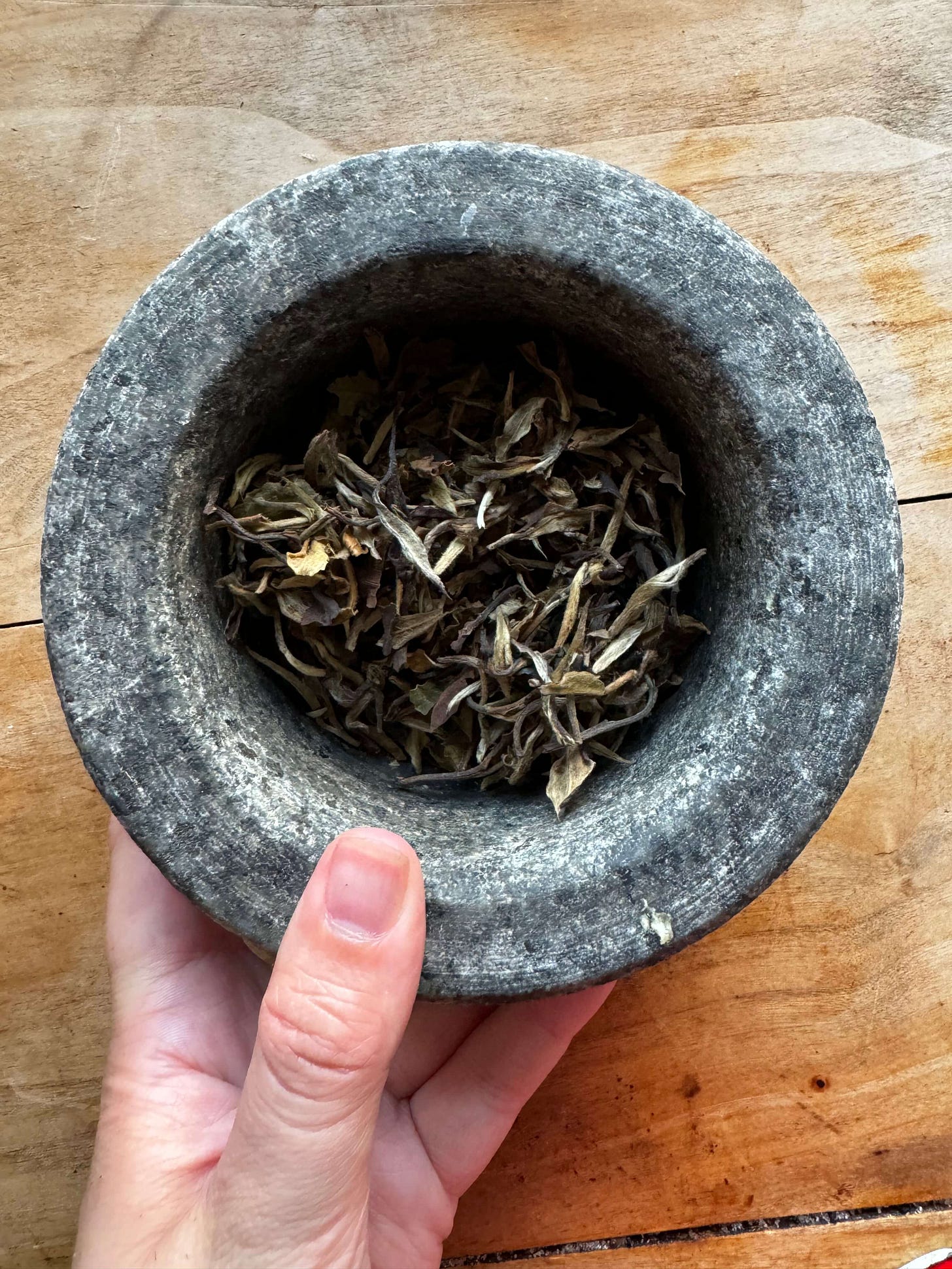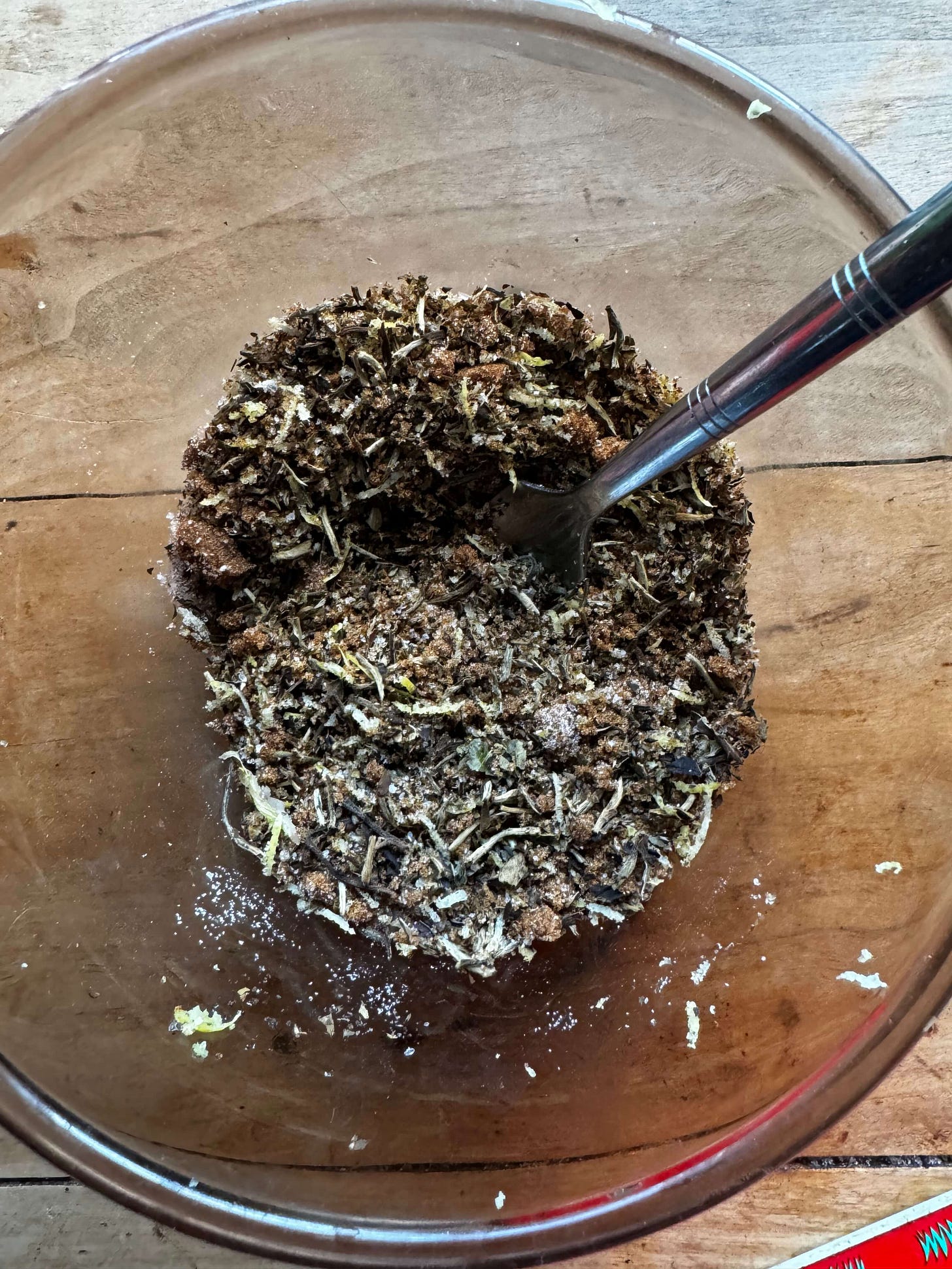Trout Cured in Smoked White Tea
From the Wuyi Mountains in China via the streams of Hampshire
I haven’t been great at publishing anything much about an extended work trip to China and Japan this year (I think I am still processing the incredible amount of things that we did and saw and the hundreds of photos) but the influence comes through my fingertips when it comes to the matter of food. Even though I can’t find the headspace to write about it, I still have to eat and I have been enjoying the interplay between food from this little island of ours with food from the massive expanse that is China and the long stretch of Japan (see also Wild Kent Rabbit Cooked in Japanese Sake).
As some of you know, I work with an excellent tea company. We’re often launching new teas that we find along our travels and, when I am finished with processing the samples, I am often left with an inordinate amount of the stuff. While tea is for drinking first and foremost, I am fascinated by its endless capacity as an ingredient too (see articles like the basic idea of Earl Grey Brownies or the wildly experimental Fish Bones, Thwarted Romance, Tea).
I recently finished working with a new Organic Lapsang Bai Mu Dan, due to launch in a few weeks. Bai Mu Dan (also known as White Peony) is a typical white tea from Fujian in China made from both the bud and the top two leaves of the plant and the taste is much like honey, flowers and melon with an amazing depth and viscosity that makes it feel more assertive that other white teas, which are typically more delicate. Quite unusually, this tea has been slowly smoked over pine wood in a small village in the Wuyi Mountains, imparting the wonderful fragrance and taste of the smoke and deepening the existing honeyed notes. I say ‘quite unusually’ because it is black tea - Lapsang Souchong - that is more famous and more commonly processed in this way. This traditional yet innovative twist using a white tea is incredibly exciting and entirely the reason I love working with tea… you can never run out of new tea experiences.
I considered the different ways to work with this tea as an ingredient and came up with a shortlist (more things to land on Substack in the coming weeks) including a very simple cure for salmon or, in this instance, chalk stream trout. While it wouldn't result in a fully smoked fish, I felt as if the tea would add a wonderful subtly to the trout with hints of smoke, honey and pine. Quite often salmon is cured with traditional lapsang souchong and even earl grey tea, so it was a safe bet with a new vibe.
I’ve put the recipe I followed below, albeit using Lapsang Souchong black tea because the other one isn’t available yet. If you’d like to know when the white tea version has launched, pop me a DM and I’ll make sure you know when it’s officially landed. In the meantime, enjoy having a go at curing raw salmon or trout with tea (please use really high quality raw fish and not the stuff from the supermarket).
Ingredients:
750g chalk stream trout or sashimi-grade salmon
100g brown sugar
100g salt
50g Lapsang Souchong Tea Leaves, roughly ground
Grated zest of one lemon
1 teaspoon freshly ground black pepper
Method:
In a bowl, mix together the brown sugar, salt, Lapsang Souchong tea, grated lemon zest, and 1 teaspoon of freshly ground black pepper.
Lay a sheet of plastic wrap on a flat surface.
Spread a portion of the curing mixture onto the plastic wrap. Place the fish fillet on top, skin side down.
Cover the fillet with the remaining curing mix, ensuring it’s evenly coated.
Wrap the salmon tightly in the plastic wrap.
Place the wrapped fish in a high-sided tray. Set another tray on top and weigh it down with a couple of cans or another heavy object.
Refrigerate for 36 hours, turning the salmon every 8 hours or so.
After curing, rinse off the mixture and pat the fish dry with paper towels.
I enjoyed mine in a cucumber panzanella type salad and on toast with cream cheese, poached eggs and chives. It’s also excellent just eaten in thick slices on the spot. I’d recommend keeping it in an airtight container and eating it within three days.
If you liked this recipe, perhaps you will also like:
These seriously awesome fudge ideas >
A cauliflower, porcini mushroom and sage soup >
This whopping testament to the heaven of chicken broth >
Or give me a follow on Instagram for real-time kitchen tomfoolery.
Thanks for reading.










What do I know ? I know that I prefer chalk stream trout to be just that, a trout in a chalk stream, additionally I think that the trout would also like to be in a chalk stream.....
Eat your heart out Nigella!